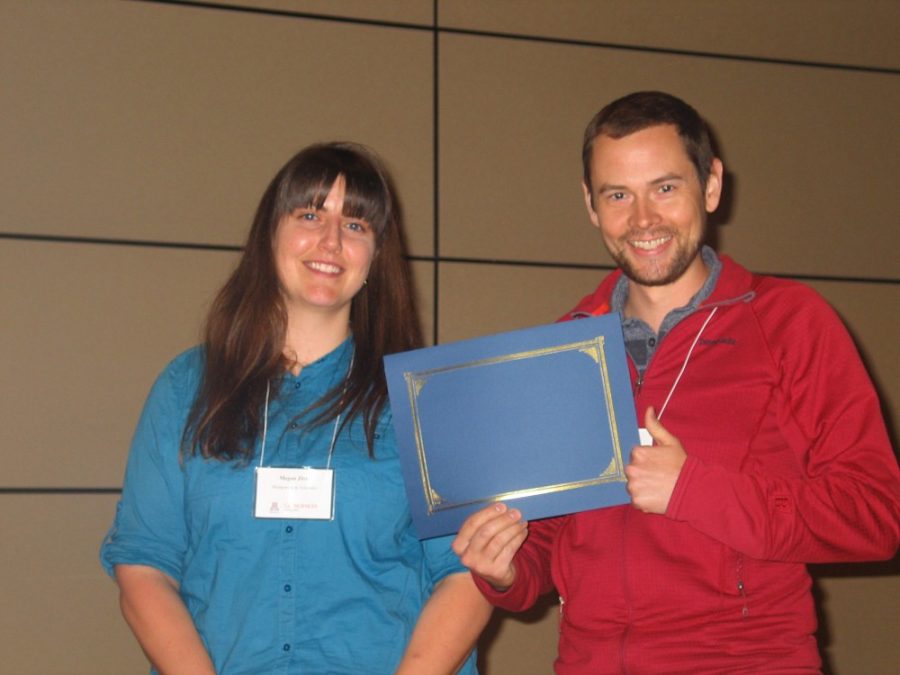The UA is world-renowned for its success in research. From biology to physics, each branch of science makes significant contributions to UA’s research community. Graduate and undergraduate researchers in geological sciences were given an opportunity to showcase their work at the 44th Annual Geodaze Symposium last week.
The UA Department of Geosciences hosted the public colloquium, which ran from Thursday to Friday. Geodaze highlighted the travels and research that students and faculty completed over the past year. Students were able to share their research and receive feedback from the attendees.
Participants presented on a wide variety of research topics, including economic geology, climate, paleoclimate, geophysics, geochemistry and plate tectonics.
Geosciences senior Jordan Abell was one of the undergraduates who presented his geochemistry research titled “Evidence of Urine in a Neolithic Tell in Relation to Animal Domestication.” Abell and his team explored the domestication of animals at their study site, Asıklı Höyük, Turkey.
Abell and his group investigated ion concentrations in a 10-meter mound, composed primarily of trash, from the Neolithic period. While the team attributed some of the ion buildup in the mound to rain, wood ash or human urine, over 75 percent of the ions were not accounted for.
“Inventory of nitrate, sodium and chlorine concentrations can be accounted for by caprine and human urination,” Abell said. “Nitrogen isotope data supports the sourcing from animal waste.”
Abell’s group concluded through extensive data analysis that the site showed evidence of early domestication of animals.
Simon Stickroth, another Geodaze participant and a geosciences graduate student, presented his tectonics research: “Tracking Exhumation of the Himalayan Fold-Thrust Belt from U-Pb Monazite and Zircon Thermochronology of the Miocene Foreland Basin, Dumri Fm., Western Nepal.” Stickroth and his team aimed to understand the development of the Himalayan fold. Fold mountains are formed when tectonic plates collide and rise up into jagged mountains at the boundary of the collision.
Geosciences graduate student Kathryn Metcalf focused on a different aspect of earth science research altogether by developing a new approach to organizing and plotting chronometric ages using Matlab, a computer programming language.
“Matlab came out of the problem of data management,” Metcalf said. “As we improve our methods, we have doors to better analytical methods, more analytical facilities and increased publications.”
Matlab is a powerful and customizable tool for organizing and plotting chronometric ages, according to Metcalf.
The eventful Geodaze symposium ended with a keynote address, by Dr. David Bercovici, a professor of geophysics at Yale University, on “The Origin of Plate Tectonics.”
Follow Priyanka Hadvani on Twitter.









